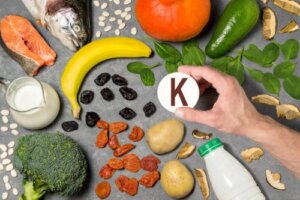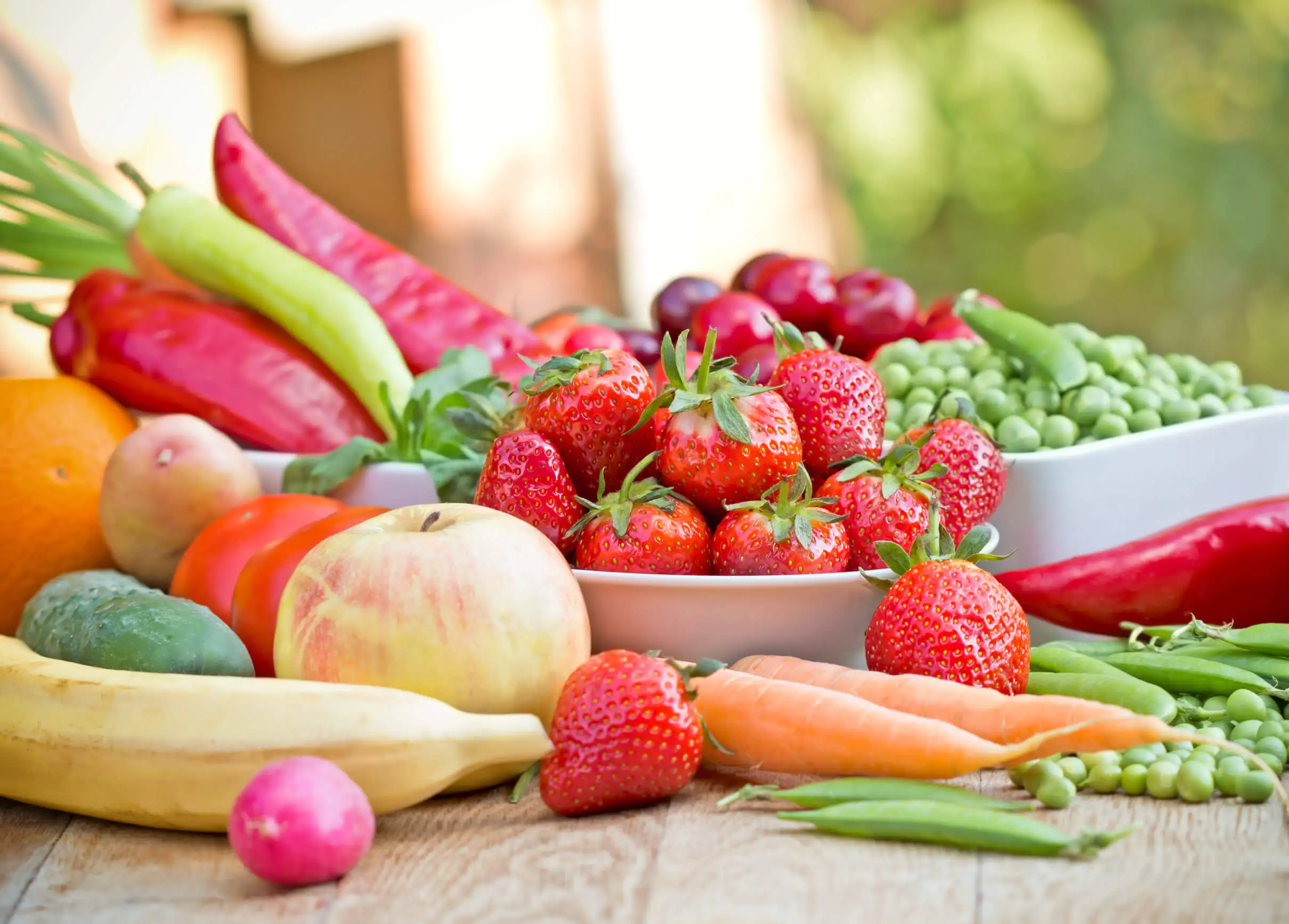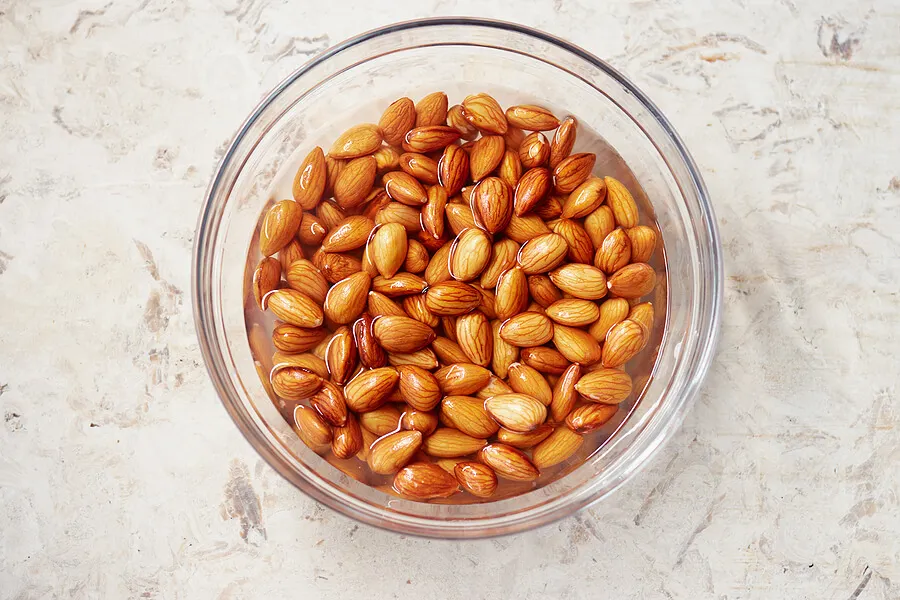Why Should You Reduce Potassium in Your Food?


Written and verified by the nutritionist Maria Patricia Pinero Corredor
We may have heard about potassium and its benefits for recovering from a hangover. A tomato or carrot juice are the options many people turn to. But little do we hear about the need to reduce potassium in the diet. Something that isn’t so easy… as most foods contain high amounts of it.
Some diseases, such as type 1 diabetes, chronic renal insufficiency, alterations of the adrenal glands or the situation of organ transplants, all merit lowering potassium intake. Even the chronic use of anti-inflammatory drugs, diuretics, or very intense exercise also require reducing the intake of this mineral.
To reduce it in the diet, it’s necessary to select the foods that contain less potassium, but also to get to know those with higher values in order to avoid them. In addition, there are some culinary techniques to extract and eliminate it.
If you’re in a situation where you need help in this regard, you’ve found the perfect article! So, don’t miss the opportunity, and read on to learn how to eat with less potassium in your diet.
What is potassium and what are its functions?
The National Kidney Foundation explains that potassium is a mineral found in a wide variety of foods. For that reason, in a healthy person with a good diet, it’s difficult to suffer a deficit.
It’s also known as an electrolyte, as it helps to conduct electricity together with sodium, calcium and magnesium. It’s important because it helps maintain heartbeat, nerve function and muscle contraction. It also promotes the flow of nutrients to the cells.
The kidney participates in regulating blood levels, but when this organ gets sick, it fails to balance it. That’s why in kidney disease it’s necessary to limit certain foods that can increase the potassium content in the blood.
Very high concentrations can be dangerous and, if they occur, the patient can feel numbness, tingling and weakness. On the contrary, low levels can lead to an irregular heartbeat or even a heart attack.
Read more: Foods that Provide The Most Potassium
How to reduce potassium in your diet?
The first thing to know is which foods contain the lowest amounts of potassium. And, after that, which ones have high concentration and medium levels. Some techniques when we’re preparing food help us to ingest less.
Potassium is found in significant amounts in fruits and uncooked fresh vegetables. Especially in the rind, edible stems, and peel.
The National Kidney Foundation also states that foods rich in potassium are those that contain more than 200 milligrams per serving. This is why it’s important to watch the amounts we eat.
Low-potassium foods
Servings of these foods contain fewer than 150 milligrams. One serving is 1/2 cup of fresh or cooked vegetables or fruit. In some cases, the serving size to reach this amount may be higher.
If you eat more than this you run the risk of making it a high potassium food:
- Apple: juice or puree.
- Red fruits: cherries, blueberries, blackberries, raspberries and strawberries.
- Apricot and its canned juice.
- Grapes and their juice.
- Fruit cocktail.
- Citrus fruits: such as grapefruit. Mandarin oranges: one small unit is allowed.
- Pear: when fresh, one small pear is allowed. Canned, half a cup is recommended.
- Peach: if fresh, a small one. But when canned, half a cup should be consumed, without the syrup.
- Pineapple and its juice.
- Watermelon: one cup provides 150 milligrams.
- Vegetables: 1/2 cup of alfalfa sprouts, cabbage, cauliflower, cooked carrots, fresh or frozen corn, cucumber and eggplant are allowed. The same portion of lettuce, onion, parsley, peas, white mushrooms, watercress, yellow squash, rhubarb, watercress and canned water chestnuts are also allowed. With asparagus 6 units and 1 stalk of celery are allowed.
- Other foods: half a cup of pasta, rice, non wholemeal bakery products, cakes and cookies without nuts and chocolate. 8 ounces of coffee and 16 ounces of tea are allowed.

Foods with moderate potassium value
These foods contain between 150 to 250 milligrams of potassium per 1/2 cup serving. Different serving sizes equivalent to these amounts are also listed below:
- Legumes: a 1/4 cup serving of cooked peas provides these amounts.
- Vegetables: cooked cabbage, chopped fresh tomato and 45 grams (2 oz) of cooked chard are recommended.
- Fruits: 1 medium unit of guava. Grapes in portions of 100 grams (4 oz) and 5 ounces of apple juice.
- Nuts: 20 to 30 grams (around 1 oz) of almonds, hazelnuts, walnuts, peanuts and 1/4 cup of fresh coconut.
- Sunflower seeds: 1/4 cup is recommended.
- Tofu: As a soybean derivative, 1/2 cup provides less than 250 milligrams.
- Brewer’s yeast: 1 teaspoon.
High potassium foods
A 1/2-cup serving of the following foods contains more than 250 milligrams of potassium. In some cases, the serving size varies:
- Fruits and fruit juices: melon, banana, figs, dried plums, raisins. 2 fresh apricots and 5 dried halves, 1/2 unit banana, 5 dates, 1 medium unit kiwi, mango, nectarine or orange. 1 medium pomegranate and 1/2 unit of papaya. Juices include grapefruit juice, orange juice, plum juice and pomegranate juice.
- Vegetables: canned tomato, cooked spinach, squash, artichoke, zucchini, dried beans, boiled beets, cooked broccoli, raw Brussels sprouts, rutabaga, parsnips.
- Other foods: chocolate, granola, bran, whole grain cereals, 1 tablespoon molasses, 1 ounce nuts and seeds, salt substitutes, 2 tablespoons peanut butter, yogurt.
- Meat, milk and dairy products: 1 serving of 150 grams (6 oz) of meat and 1 glass of milk together provide 1000 milligrams of potassium.
Techniques to reduce potassium in food
The Hospital Clínico Universitario de Valladolid establishes a series of recommendations to lower potassium in the diet. In order to do this, culinary techniques are applied to help extract the mineral from food.
Soaking
Potassium, like other minerals, is well solubilized in water. This means that to extract it from the food, it’s recommended to soak it in plenty of liquid.
To do this, the contact surface of the food with the water must be increased. Therefore, it should be peeled and cut into small cubes.
The soaking time should be overnight, between 8 to 12 hours. In addition, the water should be changed 2 or 3 times.
To facilitate the extraction of potassium, as long as the subsequent preparation of the food allows it, moderately hot water can be used, between 40 and 50 degrees Celsius (105 to 120 Fahrenheit). This facilitates the penetration into the food and the extraction of potassium.
Double cooking
To reduce the potassium content by half, it is recommended to cook the food in plenty of water (5 times the amount of the vegetable). When it boils, the cooking water should be changed.
After this, add new water and repeat the process. When the food is ready, then proceed to discard the water.
In addition, it’s important not to use the cooking water as a base stock for other preparations. This is common in soups and sauces.

Other suggestions
- If you use canned or preserved vegetables, the juice or brine should be discarded and then you should rinse them well with plenty of water.
- Baking, grilling or steaming methods shouldn’t be used either, since potassium is more concentrated.
- Frozen foods will have less potassium than fresh ones, because when thawed, the ice crystals that break the cells allow it to be extracted more easily.
- Avoid whole-grain foods and their derivatives, such as bread or crackers, since potassium is located in the bran or the shell that surrounds the grain.
- For seasoning, use herbs or spices as a substitute for salt. Some low-sodium salts are actually rich in potassium. They’re actually potassium chloride salts.
In both low potassium and moderate potassium foods, soaking and double cooking techniques can be applied. This will substantially reduce the contribution of the micronutrient.
How much potassium should be ingested?
The amount of potassium to be ingested per day should be indicated by a health expert. For example, in the case of kidney disease, the nephrologist prescribes the daily amount of potassium and the nutritionist prepares the plan.
The average values vary for different pathologies:
- Chronic renal failure: between 1560 to 2730 milligrams per day.
- Acute renal failure: 1170 to 1950 milligrams per day.
- Dialysis: 2340 to 3510 milligrams per day.
- Other pathologies: between 1000 to 2000 milligrams per day.
Not everyone should reduce potassium in their diet
To reduce the amount of potassium in the diet, the first thing to do is to go and see a nutritionist who will elaborate and supervise us on the ideal guidelines required for the baseline condition. If necessary, once the foods are selected, we can apply the techniques to further reduce the values of the mineral.
All cited sources were thoroughly reviewed by our team to ensure their quality, reliability, currency, and validity. The bibliography of this article was considered reliable and of academic or scientific accuracy.
- National Kidney Foundation. El potasio y su dieta para la IRC. Disponible en: https://www.kidney.org/es/atoz/content/potassium
- Hospital Clínico Universitario de Valladolid. Dieta pobre en potasio. Disponible en: https://ienva.org/data/dietas/dietas-en-excesos-ionicos/recomendaciones-dieteticas-dieta-pobre-en-potasio.pdf
- Northwestern Memorial Hospital. Dieta Restringida en Potasio. Diponible en: https://www.nm.org/-/media/northwestern/resources/patients-and-visitors/patient-education-espanol-spanish/northwestern-medicine-contenido-de-potasio-de-los-alimentos-potassium-in-foods.pdf
This text is provided for informational purposes only and does not replace consultation with a professional. If in doubt, consult your specialist.








